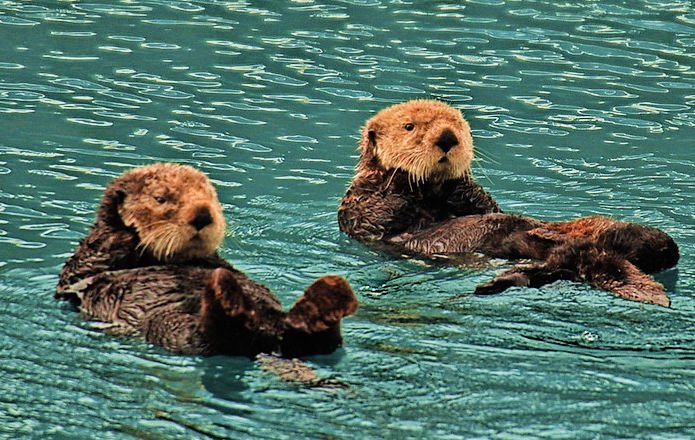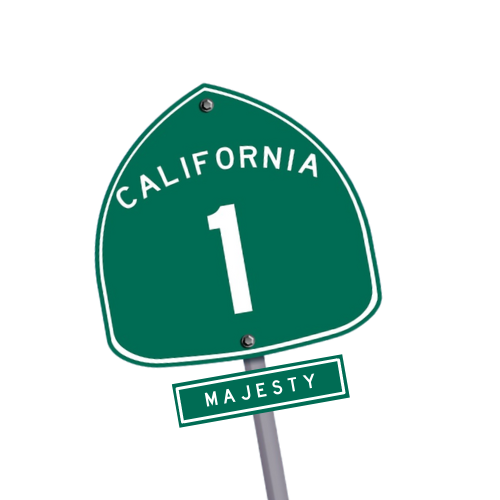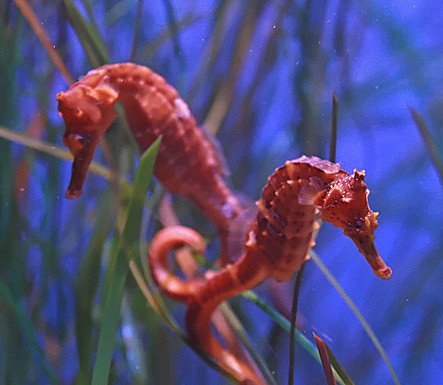The 10 Animals We See Every Time We Visit The Aquarium of the Pacific
The Aquarium of the Pacific in Long Beach, CA is a pretty amazing aquarium. If you want to find out more about planning a visit to the Aquarium of the Pacific and what you can do there, check out my post about a day we spent at the aquarium here.
The Aquarium of the Pacific is home to thousands of fish and other animals that are found in and around the Pacific Ocean. They have everything from sharks and sting rays to birds like penguins and puffins, to tropical and cold water fish…and everything in between. But..some of the aquarium’s animals are more amazing and fun to see than others. This post is a list and a peek at some of my favorite animals to see when I go to the Aquarium of the Pacific.
Here, in no particular order, is my list of the 10 best animals to see at the Aquarium of the Pacific in Long Beach, California.
1. Sea Otters

Sea otters are probably the most adorable animals in the ocean. They are furry, funny, and playful. You can find them at the back of the Northern Pacific Gallery on the second floor of the aquarium.

The sea otters at the Aquarium of the Pacific spend a good part of the day napping on the rocky deck of their enclosure. However, they also spend a lot of time swimming and playing in the water that is at the front of the habitat. If you are lucky you can get a spot up front and see their adorable antics up close. We make sure to see them every time we’re at the aquarium.

While you’re there be sure to check out the interactive trivia game. It’s one of Daniel’s favorite things to do at the aquarium. There are three touchscreens (with clean styluses available to use) that players use to answer the questions that are asked in a video on the main screen. A correct answer will move your otter one step closer to the feeding grounds near Baja California. The first otter to make it to the feeding grounds wins!
2. Sharks

Sharks are pretty amazing, especially the big ones. The Aquarium of the Pacific has several different kinds of sharks you can see, and some that you can touch. Many of them are in the Shark Lagoon area outside behind the main aquarium building.
Shark Lagoon has a large tank with several large sharks. You can see sharks such as sand tiger and black tip reef sharks.

The sawtooth shark is pretty impressive.

Shark Lagoon also has three shallow touch tanks with smaller sharks such as bamboo and epaulette sharks. There is usually a docent there talking about the sharks, answering questions, and keeping an eye on things so the sharks and the people visiting them are all safe.

The big tank in the Tropical Reef Gallery has a couple of sharks too, including this beautiful bonnethead shark. It looks like a baby hammerhead shark, doesn’t it. That’s because it is part of the hammerhead shark family.
3. Seals and Sea Lions

The seal/sea lion habitat at the Aquarium of the Pacific is pretty impressive. If you view it from the first floor of the aquarium, you can watch them swim under water. I still love this picture I took of Daniel in front of a sea lion when he was 3 or 4 years old. Talk about a lucky shot!

If you go outside to the second floor, you can watch them rest or play on the rocky deck. You can also hear them bark at each other. If you are lucky, you’ll be there at feeding time or when the aquarium staff is interacting with them. You can watch the show from the little amphitheater in front of the enclosure.
4. Lorikeets
The Lorikeet Forest is home to a flock of rainbow lorikeets. A lorikeet is a small colorful bird in the parrot family that is indigenous to the eastern coast of Australia. They are beautiful.

The Lorikeet Forest, which is located outside near Shark Lagoon, is home to about 100 of the small birds.

Lorikeets are very colorful, with beautiful green, blue, red, and purple feathers.. At the Aquarium of the Pacific you’ll find Swainson’s, Edward’s, and green-naped lorikeets.

At certain times of the day you can buy a small cup of nectar to feed the beautiful tropical birds. Although you can’t pick them up, they will often land on your hand to drink the yummy nectar.

Stephanie got lucky a few years ago when a lorikeet landed on her shoulder. (It tried to bite a freckle off of her arm right after I took this photo though, so be careful if you go feed them)
5. Jellyfish


You can find jellyfish in the Northern Pacific Gallery. There are several types of sea jellies that will mesmerize you with their otherworldly movement.

Outside, on the Harbor Terrace that is located on the east side of the main aquarium building, is a touch tank full of moon jellies. Daniel liked touching them and discovering what they feel like. He said they were smooth and slimey.
6. Frogs

Frogs have their own space at the back of the Tropical Pacific Gallery. The sound of all of the frogs and the running water in their habitats is relaxing and really cool.

The Aquarium of the Pacific has over 20 species of frogs and other amphibians on display, including the magnificent tree frog, Solomon Island leaf frog, mossy frog, Panamanian golden frog, and several species of poison dart frog.
Unfortunately, frogs and other amphibians are very sensitive to changes in the environment, including habitat destruction, the introduction of predators and/or invasive species into their ecosystem, changes in climate and the introduction of pesticides and other poisons to their ecosystem. It is believed that some species of frogs become extinct before we can even discover them, especially in Central and South America.
7. Seahorses and Seadragons

Seahorses and seadragons can be found in the Tropical Pacific Gallery. They are interesting and kind of cute. I love the way they wrap their tails around sea grass to anchor themselves to where they are.

One of my favorite things about seahorses is that the males are, as we like to say, the best daddies in the ocean. During breeding, the female seahorse deposits her eggs into a pouch in the male seahorse. He incubates the embryos and nurtures them until they are ready to hatch and go out into the sea. He does not, however, take care of the babies after they are born.

Seadragons are related to seahorses. They live in the waters off the coast of Australia. They are sometimes called Weedy Seadragons because their camouflage makes them look like seaweed.
The Aquarium of the Pacific is one of the few aquariums in the world that has successfully bred seadragons.
8.Penguins

The June Keyes Penguin Habitat is home to a colony of 20 Magellanic penguins. They are fun to watch as they waddle on the land portion of their habitat…

…and it’s even more fun to watch them when they swim through the water.

There is even a little alcove where kids can crawl and see the penguins from underneath. Well, if a kid is small enough they can walk underneath the penguins…but the rest of us definitely have to crawl. Either way, the penguins are fun to watch.
9. Rays


You can find rays in two places in the Aquarium of the Pacific. The first place you’ll find them is in the Shark and Ray Tanks outside. One tank is on the second level next to the Seal/Sea Lion enclosure, and the second set of tanks are in Shark Lagoon on the lower level. These are shallow touch tanks where you can put your hands in the water and touch rays and small sharks. Don’t worry though, the rays don’t have stingers and the sharks are small breeds like bamboo sharks that don’t bite.

You can also find rays in the Tropical Pacific Gallery. There are several in the gigantic Tropical Reef Habitat. When they swim by they look like bats flying through the water.

…and sometimes, when they swim up to the glass, you can see their underside, which looks kind of like a person smiling. It’s one of my favorite things to see in that tank.
10. Tropical Fish

Tropical fish are just pretty. They are so colorful that most people really like to watch them swim. The tropical fish tanks can get quite crowded because of this. When you visit the Aquarium of the Pacific, you can find them in the Tropical Pacific Gallery…of course.

There are angelfish…

…and coral…

…and yellow tang, just to name a few.

But let’s face it, all the kids really want to see is Nemo…I mean the clownfish.
There are a lot of pretty and colorful tropical fish at the Aquarium of the Pacific. It is completely worth it to go see them in person.
11. Divers

I know I said that this would be a list of ten amazing animals you can see at the Aquarium of the Pacific, but as I was putting this blog post together, I realized that the aquarium’s divers deserve to be on this list too.


The divers work hard to clean the tanks and feed, and take care of the animals. And they don’t even get paid to do it…Yes, you heard me right…they are volunteers and work for free. But I’ve heard that although it is work, it is fun and quite rewarding.
You can find them in the bigger tanks such as the Blue Cavern and th Tropical Reef Habitat. At the Blue Cavern tank they do a dive show several times a day in which a diver talks to the aquarium guests and teaches them about the fish that swim by. There is a docent outside the tank who will sometimes take questions from the audience.
So, to the divers of the Aquarium of the Pacific, we at California Majesty salute you. Thank you for taking care of our beloved aquarium and its inhabitants, and helping us learn more about the aquarium and the animals of the Pacific Ocean. You are awesome!
Conclusion
There is a LOT more to see and do at the Aquarium of the Pacific. There are thousands of animals to see, several films to watch, behind the scenes tours you can take, and whale watching and harbor tours that are available, just to name a few. If you are looking for a fun place to go while on a Southern California vacation or if you’re a local looking for something to do near the ocean, the Aquarium of the Pacific should be at the top of your list.
Enjoy your day visiting the amazing animals at the Aquarium of the Pacific!





I love sea otters, penguins, and seals/sea lions! Aquariums are a blast to go to! I’ve never heard of small sharks in a touch pool, interesting!
Wow, what a great place! Great job with wonderful pictures. I will add this place to my next trip to Cali. I haven’t heard about it before.
I love the otters! I could watch them for hours!